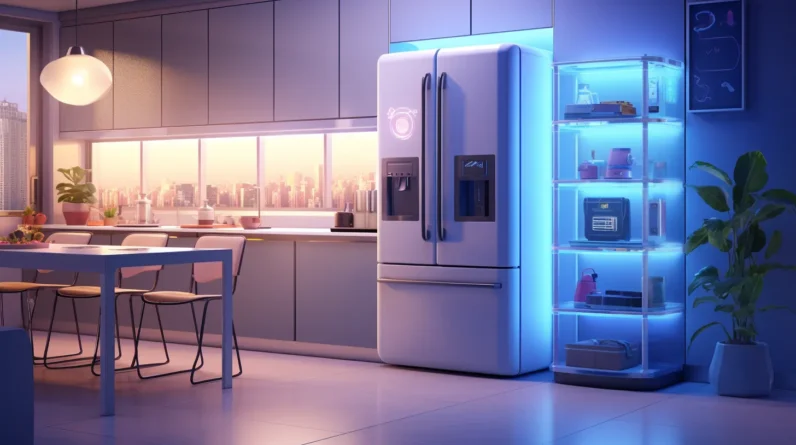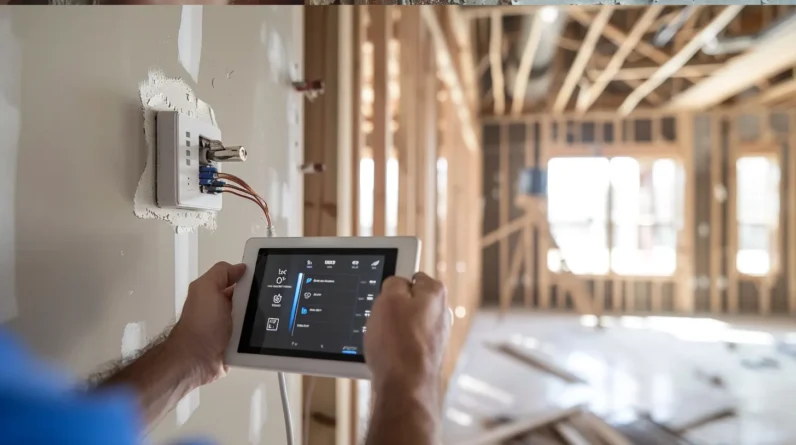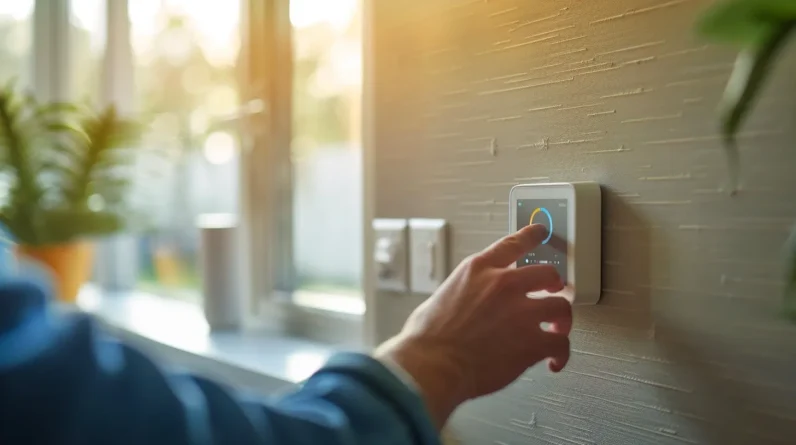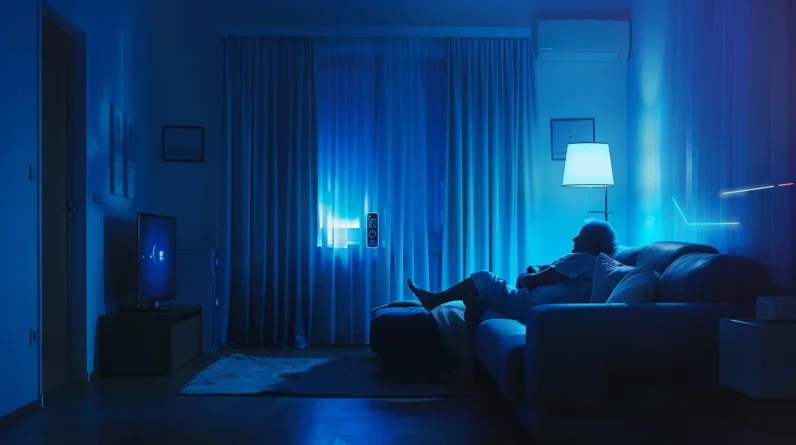
The demand for energy-saving solutions has never been greater. Enter the revolution of daily life with energy-saving smart gadgets. These innovative devices are designed to enhance comfort, preserve resources, and optimize energy consumption. From smart thermostats and plugs to lighting systems and showerheads, these cutting-edge technologies offer a seamless integration into our homes and lifestyles. In this article, we will delve into the realm of energy-saving smart gadgets, providing insights and guidance for those seeking mastery in this transformative field.
Key Takeaways
– Smart thermostats and energy-saving smart plugs improve indoor air quality and reduce energy consumption by adjusting temperature settings based on user behavior.
– Smart lighting systems allow for remote control of lighting, optimizing natural lighting and energy efficiency.
– Water-saving smart showerheads regulate water flow and have features such as a pause button and built-in timers to reduce water consumption.
– Energy monitoring devices track and analyze energy consumption in real-time, providing insights and recommendations for reducing energy usage.
Smart Thermostats: Enhancing Comfort and Efficiency
Smart thermostats offer a multitude of benefits, enhancing both comfort and efficiency in daily life. One of the key advantages of smart thermostats is their ability to improve indoor air quality. These devices are equipped with sensors that detect changes in air quality, such as the presence of pollutants or allergens. By monitoring and analyzing the air quality, smart thermostats can alert homeowners when it’s time to change air filters or take other measures to improve the indoor environment. This feature is particularly useful for individuals with respiratory conditions or allergies, as it helps to create a healthier living space.
Another way smart thermostats enhance daily life is by optimizing temperature settings. These devices are designed to learn from user behavior and adjust the temperature accordingly. For example, if the thermostat detects that no one is home during the day, it can automatically lower the temperature to save energy. Similarly, it can anticipate when residents are about to return home and adjust the temperature to ensure a comfortable environment upon arrival. By intelligently managing temperature settings, smart thermostats not only improve comfort but also reduce energy consumption, leading to cost savings and a lower carbon footprint.
Energy-Saving Smart Plugs: Powering Down for Savings
Energy-saving smart plugs play a crucial role in revolutionizing daily life by enabling homeowners to power down and save on energy consumption. These smart plugs, also known as smart powerstrips, are designed to manage energy usage effectively. They provide users with the ability to control the power supply to their devices remotely, allowing them to turn off appliances and electronics when not in use, even when they are not at home.
Smart plugs work by connecting to a home’s Wi-Fi network, allowing users to control their devices through a smartphone app or voice commands. This level of control and automation helps homeowners optimize energy efficiency by eliminating standby power consumption. Standby power, also known as phantom power or vampire power, refers to the energy consumed by devices that are plugged in but not actively being used. By cutting off power to these devices, smart plugs help reduce wasted energy and lower electricity bills.
Moreover, smart plugs can be integrated with other smart appliances, such as smart thermostats and smart lighting systems, to create a comprehensive energy-saving solution for the entire home. This integration allows users to create schedules and automation routines that further optimize energy efficiency. For example, users can set their smart plugs to turn off devices during specific hours or when they leave the house, ensuring that energy is not wasted unnecessarily.
Smart Lighting Systems: Illuminating the Way to Energy Efficiency
To further enhance energy efficiency within a smart home ecosystem, the integration of smart lighting systems presents an innovative solution for illuminating spaces while minimizing energy consumption. These systems utilize advanced technologies to provide efficient lighting options that can be controlled remotely or automatically based on preset schedules, occupancy sensors, or the level of natural light available. Here are three key features of smart lighting systems:
– Smart switches: These devices allow users to control energy usage effectively by providing the ability to turn lights on or off remotely. With the use of smartphone apps or voice commands, users can easily manage their lighting needs even when they are not at home. This feature ensures that lights are only used when needed, reducing unnecessary energy consumption.
– Smart blinds: By integrating smart blinds into the lighting system, homeowners can optimize natural lighting and energy efficiency. These blinds can automatically adjust throughout the day based on the position of the sun, reducing the need for artificial lighting. Additionally, they can be controlled remotely, allowing users to adjust the blinds based on their preferences or to create a desired ambiance.
– Energy monitoring: Smart lighting systems often include energy monitoring features that provide real-time data on energy usage. This allows users to track their energy consumption, identify areas of improvement, and make informed decisions to further enhance energy efficiency.
Smart lighting systems into a smart home ecosystem not only provides convenient control over lighting but also contributes to significant energy savings. The ability to control energy usage effectively through smart switches, optimize natural lighting with smart blinds, and monitor energy consumption allows homeowners to create a more sustainable and energy-efficient living environment.
Water-Saving Smart Showerheads: Reducing Waste, Preserving Resources
Water-Saving Smart Showerheads contribute to the reduction of waste and the preservation of resources through their innovative design and efficient water usage. These smart showerheads are designed to reduce water consumption while still providing an enjoyable and invigorating shower experience.
One of the key features of water-saving smart showerheads is their ability to regulate and control water flow. By incorporating sensors and advanced technology, these showerheads can detect when water is being wasted and adjust the flow accordingly. This ensures that only the necessary amount of water is used, thus reducing consumption and promoting sustainability.
In addition to regulating water flow, water-saving smart showerheads also offer other features that further enhance their efficiency. For example, some models have a pause button that allows users to temporarily stop the flow of water while lathering or shampooing, further reducing water wastage. Others have built-in timers that remind users to limit their shower time, encouraging shorter showers and conserving water.
These smart showerheads often come with user-friendly interfaces and mobile apps that allow users to monitor their water usage and track their conservation efforts. This not only raises awareness about water consumption but also empowers individuals to make more informed choices and actively contribute to reducing waste.
Water-Saving Smart Showerheads are a valuable addition to any bathroom, offering a practical and effective solution to reducing water consumption and promoting sustainability. With their innovative design and efficient water usage, these smart gadgets play a crucial role in preserving our precious resources for future generations.
Energy Monitoring Devices: Tracking and Optimizing Energy Consumption
The implementation of energy monitoring devices revolutionizes the management of energy consumption, allowing individuals to track and optimize their usage with precision and efficiency. These devices offer real-time data on the energy consumption of various appliances, enabling users to identify energy-hungry devices and adjust their usage accordingly. By tracking appliances, individuals can gain insights into their energy usage patterns and make informed decisions on how to optimize their usage.
To optimize usage, energy monitoring devices provide features such as energy alerts and usage history. Energy alerts notify users when their energy consumption exceeds a preset limit, helping them stay within their desired energy budget. Usage history allows individuals to analyze their energy consumption over time, identifying trends and patterns that can guide them in making changes to their energy habits.
Energy monitoring devices often come with energy-saving tips and recommendations. These suggestions are based on the data collected by the devices and can help individuals identify opportunities for reducing energy consumption and saving costs.
Conclusion
The revolution of energy-saving smart gadgets has transformed daily life by providing enhanced comfort, efficiency, and sustainability. Smart thermostats, plugs, lighting systems, showerheads, and energy monitoring devices have all played a crucial role in reducing waste and preserving resources. By incorporating these innovative technologies into our homes, we can contribute to a more sustainable future while enjoying the benefits of convenience and cost savings. Let us embrace these smart gadgets and pave the way towards a greener and more efficient tomorrow.







